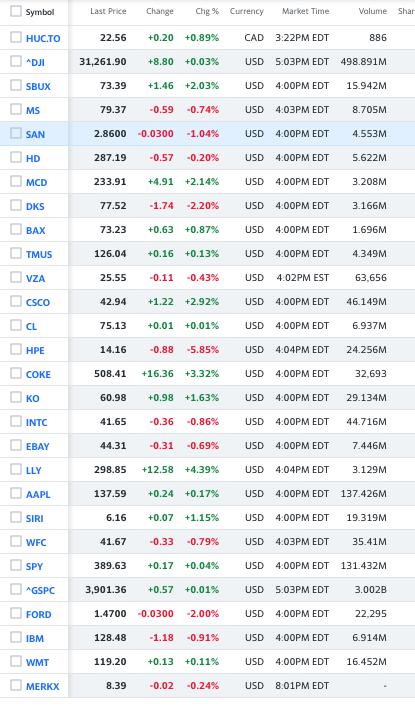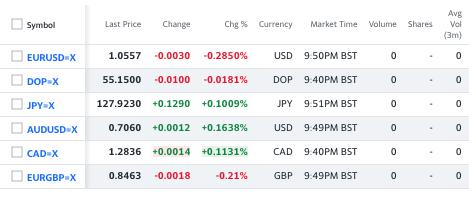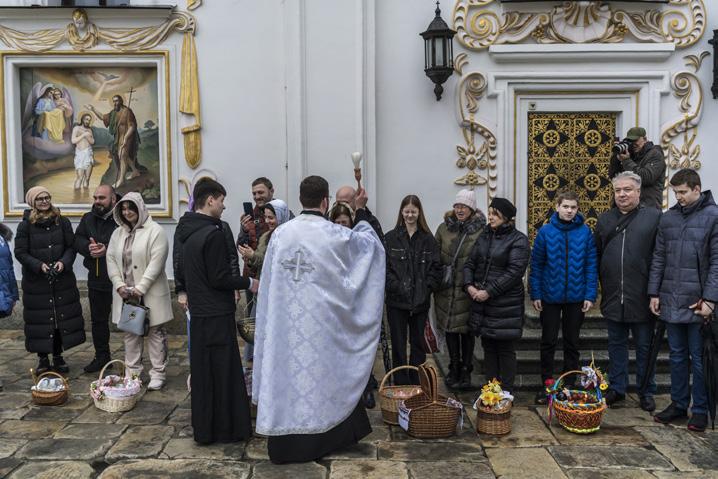
4 minute read
As Earnings Season Begins, S&P 500 Forecast Looks Less Weak
As quarterly U.S. earnings got under way with upbeat reports from JPMorgan Chase & Co and other major banks Friday, analysts marginally brightened their dim outlook for first-quarter U.S. results compared with a week ago.
Based on actual results from 30 of the S&P 500 companies and estimates for the rest, analysts now expect earnings for the S&P 500 in aggregate to have declined 4.8% in the first quarter of 2023 from the year-ago period, according to Refinitiv data Friday. That compares with their week-ago forecast for a 5.2% year-over-year decline in the quarter.
Advertisement
S&P 500 earnings fell 3.2% year-over-year in the fourth quarter of 2022, based on Refinitiv data, which means the first quarter still would mark a second straight quarterly decline in U.S. earnings, or a profit recession.
Investors have been eagerly awaiting quarterly results from banks following the collapse of two U.S. regional banks in March.
While shares of JPMorgan and other big banks rallied following Friday’s results, shares of regional banks mostly fell, with PNC Financial Services Group Inc ending nearly flat after it posted a quarterly profit beat but missed expectations on net interest income.

“While we don’t think earnings season will bring much in the way of good news, expectations are low enough that we may see stocks hold up again after results,” Gina Bolvin, president of Bolvin Wealth Management Group in Boston, wrote in a note Friday.
A slew of other regional banks are still due to report in the coming weeks, including Zions Bancorp on Wednesday. Quarterly results are also expected next week from Goldman Sachs Group and Netflix.
Data also showed that the number of Americans filing new claims for unemployment benefits increased more than expected last week, a further sign that labor market conditions were loosening up.
“This is a good indication that inflation is easing and dropping rather sharply. Jobless claims were also favorable news for the Fed,” said Peter Cardillo, chief market economist at Spartan Capital Securities in New York.
“Inflation both at the consumer and producer levels are going south, in the right direction ... even though elevated, it’s still good news and this is one big consideration in terms of the Fed ending its tightening cycle.”
The benchmark S&P 500 has traded in a tight range this month, having recovered from a selloff in March fueled by the recent banking crisis, as investors assessed the path for U.S. interest rates.
Wall Street closed lower on Wednesday after data showed consumer prices rose at a slower-than-expected pace in March, however, core prices remained sticky and supported the case for another 25-basis point rate hike by the Fed in May.
Investors mostly stuck to expectations of the 25-bps hike after Thursday’s data.
U.S. Treasury yields fell, boosting rate-sensitive growth stocks. Apple Inc, Amazon.com Inc and Alphabet Inc rose nearly 2%.
Economy-sensitive industrial, financial and energy sectors gave up some of their recent gains.
Minutes released on Wednesday from the Fed’s latest policy meeting indicated concerns of a recession following the banking sector stress and that several policymakers considered pausing rate hikes last month.
Big U.S. banks JPMorgan Chase & Co, Citigroup Inc and Wells Fargo & Co are scheduled to report quarterly results on Friday, and investors will watch them closely for details about the sector’s overall health.
Analysts expect S&P 500 companies to record a profit decline of 5.2% in the first quarter, as per Refinitiv IBES data, in what could be their worst showing since the third quarter of 2020.
Financial companies that are part of the S&P 500 are expected to report a profit growth of 4.3% in the first quarter.
At 9:43 a.m. ET, the Dow Jones Industrial Average was up 18.09 points, or 0.05%, at 33,664.59, the S&P 500 was up 13.74 points, or 0.34%, at 4,105.69, and the Nasdaq Composite was up 106.53 points, or 0.89%, at 12,035.87.
By MATTHEW MPOKE BIGG
Hundreds of Orthodox Christians lined up outside a cathedral in the Ukrainian capital, Kyiv, after a service Sunday as they waited for a priest to bless them with a spray of water as part of an Easter tradition. They carried baskets packed with candles, delicately dyed eggs, paskha cake, chunks of cured pork fat known as salo, and sweet Ukrainian wine called Kagor. As the priest came down the line, some flinched or burst into giggles as the water caught their faces.
Alisa Kupchyn, 18, who stood in the half circle of people outside the church, the Holy Dormition Cathedral, said she wasn’t normally a churchgoer but she respected holy days.
“I just moved to Kyiv and wanted to visit the famous church,” she said, having arrived from the city of Dnipro in central Ukraine for medical studies.
It is the second year that Orthodox Christians of Ukraine have celebrated Holy Week in the shadow of war, but much has changed for residents of Kyiv since last Easter. In the weeks before then, Ukrainian forces had driven Moscow’s troops from the area around the capital, and the scale of the atrocities that emerged in the wake of the Russian retreat was still becoming apparent.
In addition, the start of Russia’s full-scale invasion of Ukraine on Feb. 24 last year prompted an exodus from the capital. Though Easter week fell in late April after a semblance of normality had started to return, many of the city’s residents remained absent.
This year, thousands of men, women and children flocked to services for Palm Sunday, Good Friday and Easter Sunday at the large Orthodox churches in the capital and surrounding areas. The increased crowds are a reflection of the reality that, though fighting rages in eastern Ukraine, a relative calm has returned to the capital.
“On this day a year ago, we all prayed that Ukraine would endure,” President Volodymyr Zelenskyy of Ukraine said in an overnight speech. “Today — for Ukraine to win.”
He filmed the speech at the Kyiv-Pechersk Lavra, or Monastery of the Caves, a network of churches that overlooks the Dnieper River and is a cradle of Christian Orthodoxy in Eastern Europe.
In recent months, authorities have moved against a branch of the church, the Ukrainian Orthodox Church of the Moscow Patriarchate. It is linked to the Russian Orthodox Church, whose leader, Patriarch Kirill, has praised the war in Ukraine launched by President Vladimir Putin of Russia.
Ukraine’s government has ordered the Moscow Patriarchate church to quit the parts of the Lavra that it uses, leading to a standoff at the site with protesters on both sides. The growing primacy of Ukraine’s independent Orthodox church made Easter even more significant for some worshippers there.
In one example, the Moscow Patriarchate church relinquished control of the Holy Dormition Cathedral to the government in January, and, on Sunday, Ukraine’s independent church held its first-ever Easter service there.

“I’m not very religious, but this year is special,” said Oleksandr Trokhymets, 40, a lawyer and a military officer who had come to a service at the cathedral with his daughter. “I want on this day to be here with Ukrainian people and Ukrainian priests.”










